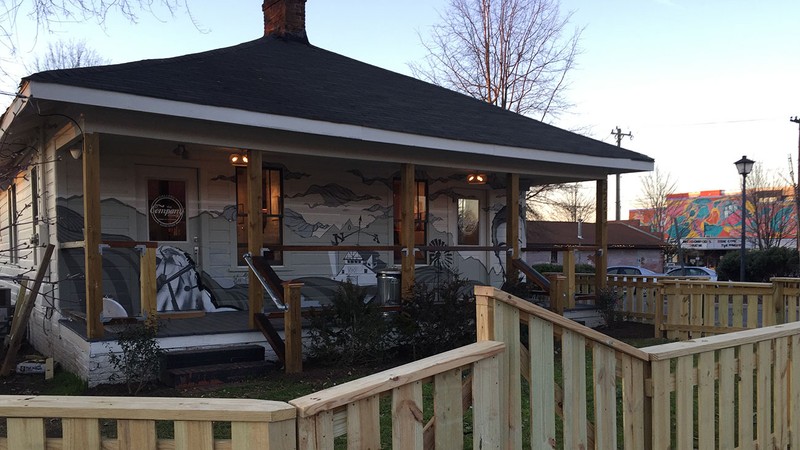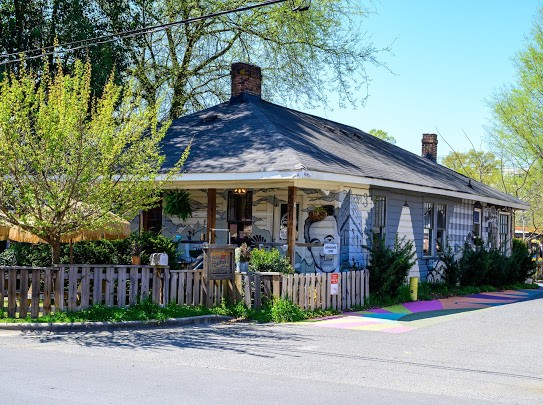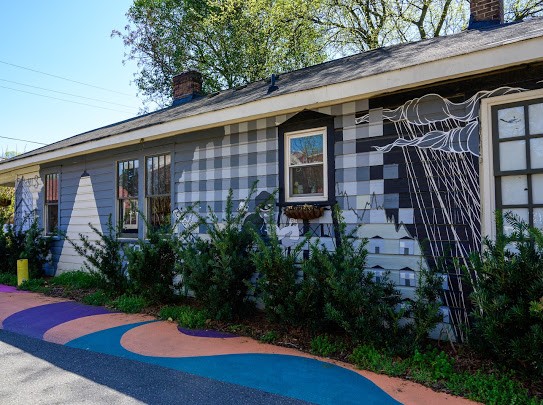NoDa Company Store
Introduction
Author-Uploaded Audio
Listen to a narration of this entry's description by Bridget Anderson.
Text-to-speech Audio
Images
NoDa Company Store history mural

This way to Sunday Funday

Company Store - Front Entrance

The Company Store Murals

Backstory and Context
Text-to-speech Audio
Built around 1905, this former mill house has been the home of a variety of tenants over the years, including plumbers, carpenters, musicians, and artists.
In 2015, two NoDa locals purchased the property with plans to create a space where everyone would feel welcome. They also wanted the building to be a work of art, and so they commissioned Matt Hooker and Matt Moore to wrap the store’s exterior with a mural.
Using acrylic paint and a grayscale palette, Hooker and Moore transformed the bungalow into a unique piece of art that tells the story of historic North Charlotte. Around the exterior, we see a graphic representation of NoDa’s eclectic history as it moved from being farmland to a booming textile mill town, to Charlotte’s Arts & Entertainment District.
The front of the house along Yadkin Avenue depicts the start of our history with sprawling farmland and rolling hills as part of the Rosedale Plantation. As you walk to the right, you’ll notice a portrait of General William Lee Davidson, who was an officer of the North Carolina militia and the Continental Army during the American Revolutionary War.
Just around the corner, the mural depicts the areas’ history as part of the textile industry, with a representation of the Highland Mill #3 tower—which opened in 1903 and was the first of three textile mills to be built in this part of Charlotte.
Moving further to the right you will see one of NoDa’s infamous chicken thieves-- a nod to the sometimes seedy reputation the neighborhood has had. The name of the place is also a cheeky reference to the history of labor in the area. North Charlotte—like other mill towns—was a planned community built to house the workers of the new factories. The owners of these factories didn’t just own the places people worked, but also their homes where they lived, the schools where children learned, the churches where they worshipped, and the many of the stores where people spent their money, which ensured that much of the money the mill paid to its employees circulated right back into the hands of their employers through the purchases they made at the company-owned stores.
Around the next corner, you’ll find sections pointing to our seedier past of brothels, gambling, and the Triple X movies that were shown at The Astor Theater across the street, as well as a giant portrait of Paul Sires, who along with Ave Ruth Lyons, was one of the people responsible for opening galleries in the area and turning this into an arts district in the 1990s.
